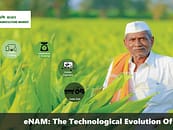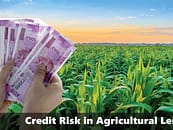What is Aquaponics?
Aquaponics is a system of aquaculture in which the waste produced by farmed fish or other aquatic creatures supplies the nutrients for plants grown hydroponically, which in turn purify the water. The organic produce market in India is expected to grow 5-10 folds in the coming 2-3 years. The simple reason being the rise in awareness among the consumers about the ill-effects of chemically produced food items. Moreover, arable land and groundwater is contaminated due to runoff of these chemicals. A more organic and sustainable mode of agriculture was the need of the hour but the traditional methods were incompetent due to low output. The vision of self-sufficiency and sustainability could not be met in tandem.
Aquaponics came out to be one stop solution for these prevailing problems. It is a sustainable method of organic agriculture that relies on a symbiotic combination of aquaculture and hydroponics. Aquaculture is the process of breeding, rearing and harvesting of fishes and other aquatic animals. Hydroponics on the other hand is process of growing plants without any soil depending only on the mineral nutrients dissolved in water. By the combination of aquaculture and hydroponic systems, aquaponics capitalizes on their benefits and eliminates the drawbacks of each.
Aquaponics is predominantly self-sustaining system where water from an aquaculture system is fed to a hydroponic system where the by-products are broken down by nitrifying bacteria first into nitrites and further into nitrates that are utilized by the plants as nutrients. The water is recirculated back to the aquaculture system. The plants primarily feed on the discharge or waste of aquatic organisms and keep the water clean for the fishes. The system requires minimal nutrient supplement for plant growth.
The main inputs to the system are water, oxygen, light, feed for the aquatic animals, and electricity to pump, filter, and oxygenate the water. Spawn or fry could be added to replace grown fish that are taken out from the system to retain a stable system. The output of aquaponics system is not just the vegetables cultivated in hydroponics bed but also edible aquatic animals like fishes and prawns which are raised in the aquaculture section.
This revolutionary self-sustaining method has gained traction in the recent times owing to huge potential in areas of organic and sustainable agriculture. Government bodies have acknowledged the potential of this unconventional method lately. MPEDA (Marine Products Export Development Authority) collaborated with banks to provide financial support for the farmers in Cherai, a coastal village in Kerala. They were also supported with the supply of fish seeds, feeds, water quality detection kit and technical training by MPEDA.
FocusAgritech’s Outlook:
With the rising trend of organic products and need to switch to a sustainable agriculture, hydroponics is the one stop solution. It has a potential to generate significant revenues even after limited availability of farm land area. This novel idea needs to be scaled to village level with proper training and assistance from government bodies. Private players can have the first mover advantage in this high potential farming technique where their research efforts can develop newer and more varieties of items that can be cultivated using this method.
Companies to watch: Hydrilla, Aquaponics in India, LandCraft Agro
Recent Article
Disseminating Information through Farmers’ Portal







